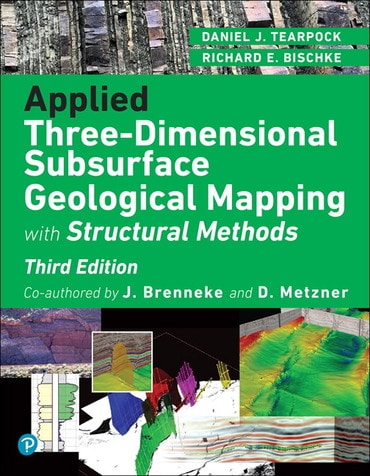Switch content of the page by the Role togglethe content would be changed according to the role

Applied Three-Dimensional Subsurface Geological Mapping: With Structural Methods, 3rd edition
Published by Pearson (July 2, 2020) © 2021
- David Metzner
- Daniel J. Tearpock
- Richard E. Bischke
- James Brenneke
$155.99
- Available for purchase from all major ebook resellers, including InformIT.com
$155.99
- Available for purchase from all major ebook resellers, including InformIT.com
Title overview
Applied Three Dimensional Subsurface Geological Mapping: with Structural Methods is recognized worldwide as the most authoritative, practical, and comprehensive guide to structural mapping methods that result in valid three-dimensional geologic interpretation. For many years, it has been an indispensable resource for geoscientists throughout the oil and gas industries and beyond. Now, authors with over a century of hydrocarbon exploration and development experience have thoroughly updated this guide to reflect the field’s latest advances. They systematically present the field’s key principles and recent innovations, drawing on deep practical expertise to help professionals integrate all available geologic, engineering, and geophysical data to generate the most reasonable subsurface interpretations consistent with all available data, and build maps that successfully identify oil and gas reserves.
Applied Three Dimensional Subsurface Geological Mapping: with Structural Methods, Third Edition covers multiple aspects of geoscience interpretation, as well as the optimal construction of subsurface maps and cross-sections obtained from well logs, seismic sections and outcrops. This edition’s extensive new coverage includes:
- Entirely new chapters on computer mapping, shale basin exploration, and prospect reserves and risk analysis
- Coverage of important innovations related to shale reservoirs, hydraulic fracturing, deviated wells, and directional wells
- Expanded coverage of computer geologic interpretation and mapping
